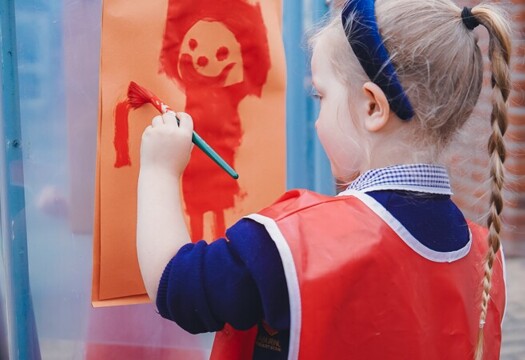- Home
- Curriculum
- Subjects
- Art & Design
Art & Design
Our Art curriculum follows the content and sequencing of the Primary Knowledge Curriculum (PKC), which has been designed to be both knowledge-rich and coherently sequenced. It builds on foundations laid in the EYFS Expressive Arts curriculum, where children explore a range of media, develop creativity and self-expression, and begin to observe, discuss, and reflect on their own work and that of others. These early experiences provide the groundwork for practical skills and artistic understanding in Key Stages 1–2.
The curriculum gives children a deep understanding of art as a discipline. They study artists, designers, and architects, explore the artistic concepts behind their work, and learn how these connect across different styles, periods, and cultures. Pupils are encouraged to make connections between the work of others and their own creations. They study and critically evaluate artists’ work before applying their learning in their own art, reflecting and refining ideas in a cyclical process of learning, creating, and evaluating. Alongside developing expertise, the curriculum fosters a love of art, giving children meaningful opportunities for self-expression and helping them develop their own artistic voice.
The overall scheme provides gradual progression in skills, knowledge, and process. Skills are developed across painting, drawing, 3D form, collage, textiles, printmaking, and mixed media, introducing children to a diverse range of materials. Knowledge of artistic concepts and types of art progresses over time — for example, Style in Art and Narrative Painting are studied in Year 1, revisited in History Painting in Year 3, and further explored in Style in Art in Year 5. Process progression is built into the planning, combining critical analysis of others’ art with the observation, exploration, and evaluation needed for pupils to create their own. Activities are carefully sequenced: in Key Stage 1, pupils focus on verbal and written observations and analytical and imaginative drawing. In Key Stage 2, they progress to independent investigation, sketching, annotation, design, and planning, allowing them to experiment and invent. Units in Years 5 and 6 particularly emphasise independent and investigative study, reinforcing understanding of the artistic process.
Pupils explore a wide range of artistic concepts, including line, shape, colour, tone, form, space, and texture, and experiment with different types of art, such as painting, drawing, sculpture, collage, textiles, printmaking, and mixed media. They learn how artists combine these elements to produce work in different styles, from realistic to abstract, and across a variety of subject matters, movements, historical periods, and cultures.
The curriculum meets the National Curriculum for England and examines how art has shaped Western history and culture, studying key periods such as Ancient Greece and Rome, Anglo-Saxon England, the Italian Renaissance, Victorian art, French Impressionism, and Modernism. Where art links to historical periods studied in the History curriculum, units are taught afterwards, helping children make meaningful cross-curricular connections.
Recognising that a study of Western art lacks cultural diversity, the curriculum includes specific units and artists to provide balance. Pupils study art from the Islamic world, West Africa, and China, exploring non-Western contributions to global art and their influence on Western traditions. Women artists are included throughout, and Key Stage 2 units provide opportunities to discuss underrepresentation and explore work by women and artists from ethnic groups traditionally underrepresented in British art.
By the end of primary school, pupils have developed strong creative skills, a broad understanding of art history and culture, and the confidence to express themselves as artists — curious, reflective, and inspired to continue their creative journey.
